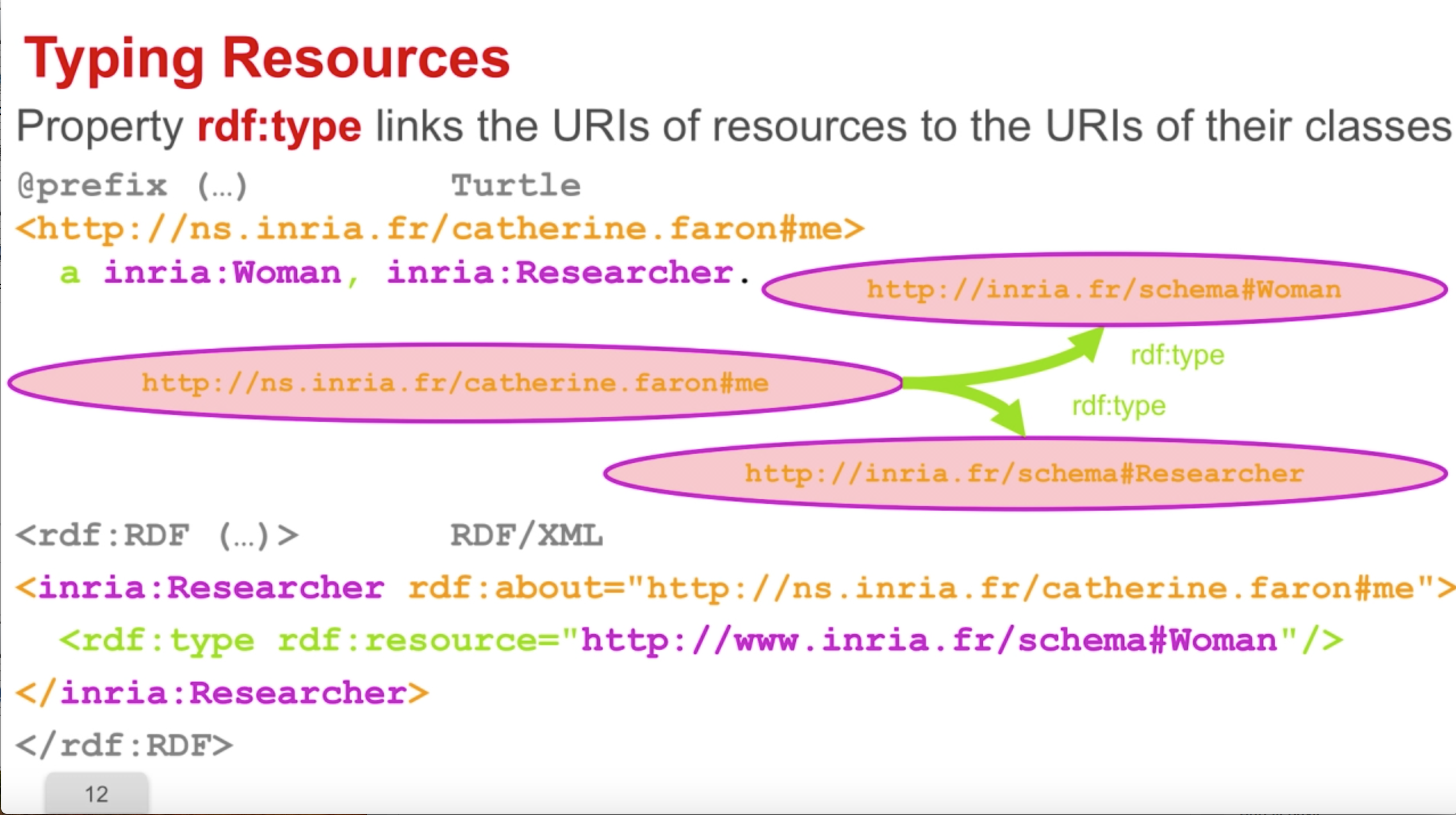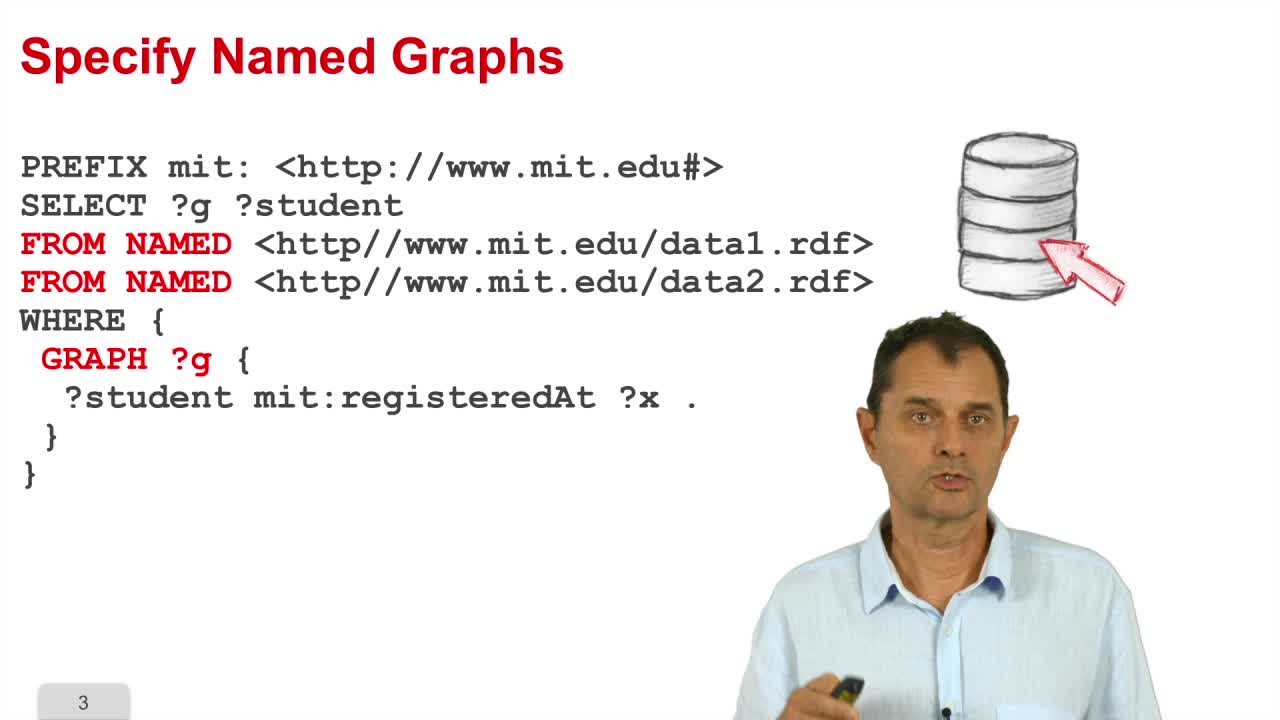
Corby, Olivier (1959-....)
Olivier CORBY est docteur en informatique (UNS), chercheur INRIA dans l'équipe Wimmics (INRIA, I3S, CNRS, UNS), il enseigne à Polytech Nice. Il s'intéresse à la représentation des connaissances basée sur les graphes et au Web sémantique. Il est le concepteur du logiciel Corese.
Vidéos
4. Values, Types and Languages
This sequence is about the specificities of the RDF model related to typing literal values and resources in an RDF graph and indicating the
Demos about SPARQL
Flint, a SPARQL Query Editor Editors are now available for SPARQL. We present the Flint structured editor which provides syntactic coloration. The editor proposes SPARQL keywords according to the
Conclusion of the MOOC Introduction to a Web of Linked Data
This video gives a summary of all the notions that have been presented in the 4 parts of the MOOC Introduction to a Web of Linked Data. We saw that we can use HTTP URIs to
Demos about The RDF Data Model
Validating and translating RDF data The W3C RDF validation service checks the validity of RDF statements in the RDF/XML syntax and, in the case where these statements are valid, it displays
3. From pages to resources
In this third part, we will see another evolution of the Web, or more precisely, an evolution of the way we use the Web. We will
7. RDF Schema
This sequence will introduce you to the RDF Schema, the standard to represent vocabularies to be used in RDF descriptions. In the
3. JSON-LD: JSON syntax for RDF
JSON-LD is a JSON syntax for RDF. JSON stands for JavaScript Object Notation. It is a hierarchical structure of name-value pairs. It is
Demos about a Web of Linked data
The BBC Web site uses linked (open) data The Wildlife documentary catalog on the Web site of BBC The Web site of BBC is structured and augmented with both internal and public linked data. In
2. A Triple Model and a Graph Model
This sequence will introduce the principles of the RDF model. We will see that it is a triple model and a graph model. RDF stands for
4. Pre and Post Processing
In the fourth part, we will see the pre and post processing of a SPARQL query. An RDF dataset is composed of a default graph
6. LDP : a REST API to linked data
This part is about the Linked Data Platform standard which provides the REST API to link data. This is a set of standardized HTTP and RDF
1. Historical Introduction to the Web Architecture
Going back in history, back in 1945, Vannevar Bush wrote an article entitled "As we may think". In this article, he












